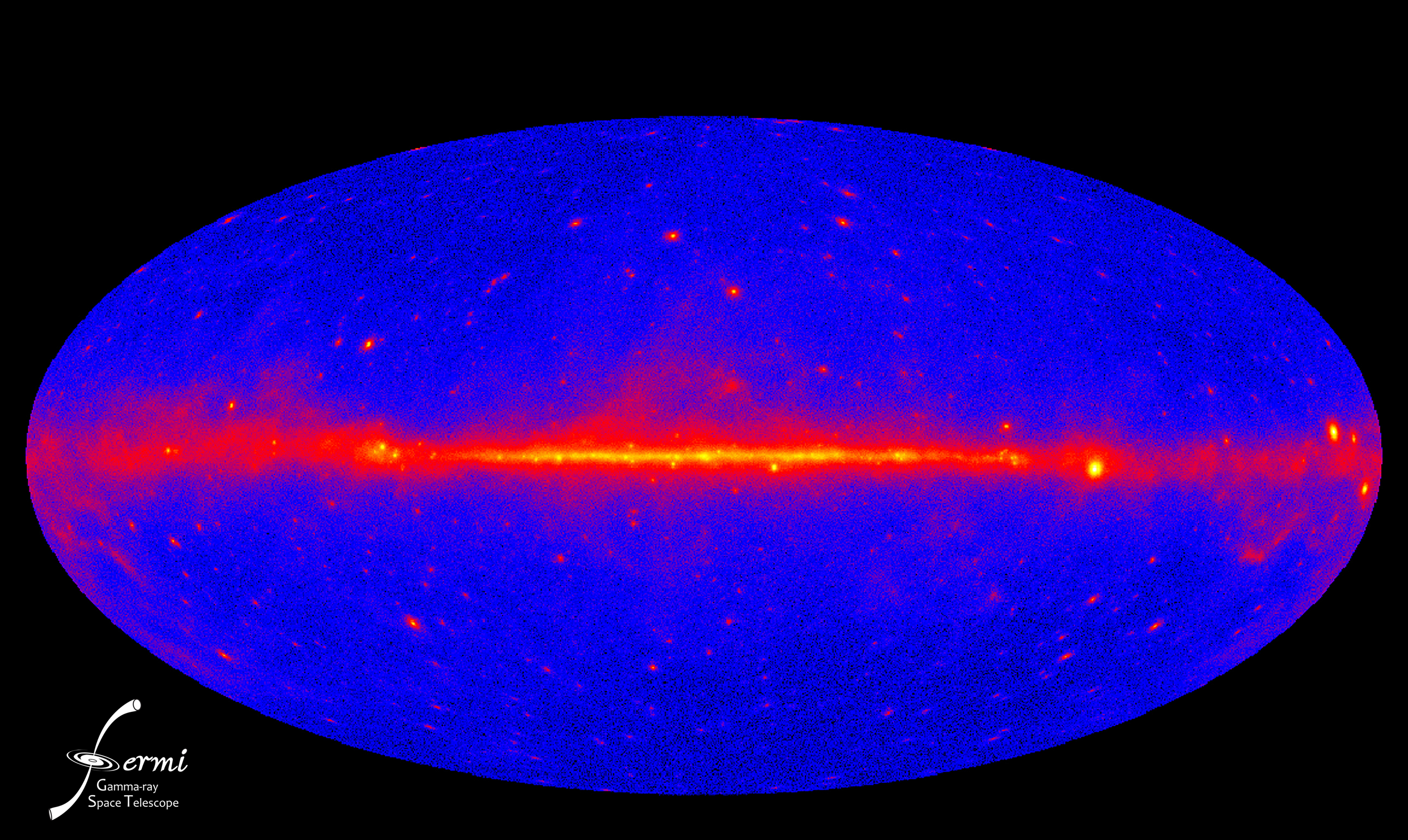Science News
Gamma-Ray Mystery
March 9, 2010

Gamma-rays from beyond the galaxy—where do they come from? Scientists thought they knew, but careful observations have a way of disproving some theories. Launched in June 2008, the Fermi Gamma-ray Space Telescope (named after physicist Enrico Fermi) maps the gamma-ray sky continuously, looking for high-energy light from across the Universe.
Scientists thought that the gamma-rays outside our galaxy were jets emitted from the large black-holes found in the center of other, distant galaxies. But, data gathered with the Fermi telescope has indicated that this is wrong… Well, not entirely wrong, but about 70 percent wrong.
“Active galaxies can explain less than 30 percent of the extragalactic gamma-ray background Fermi sees," said Marco Ajello, an astrophysicist at the Kavli Institute for Particle Astrophysics and Cosmology at Stanford. “That leaves a lot of room for scientific discovery as we puzzle out what else may be responsible.”
Ajello and the Fermi team analyzed data acquired by Fermi’s Large Area Telescope during the observatory’s initial year in space. The first challenge was eliminating emissions from our own galaxy.
“The extragalactic background is very faint, and it’s easily confused with the bright emission from the Milky Way,” said Markus Ackermann, another member of the Fermi team who led the measurement study. “We have done a very careful job in separating the two components to determine the background's absolute level.”
These measurements, published online yesterday in the journal Physical Review Letters, demonstrate that active galaxies turn out to be only minor players in the gamma-ray sky.
What else may contribute to the extragalactic gamma-ray background? Particle acceleration in star-forming galaxies and merging galaxies, perhaps. Also, the ever-mysterious dark matter could be a source. According to Ajello, “Dark matter may be a type of as-yet-unknown subatomic particle. If that’s true, dark matter particles may interact with each other in a way that produces gamma rays.”
Improved analysis and continued observations will enable scientists to address these potential contributions. Meanwhile, Fermi will stay on the job, looking for more surprises in the gamma-ray sky.